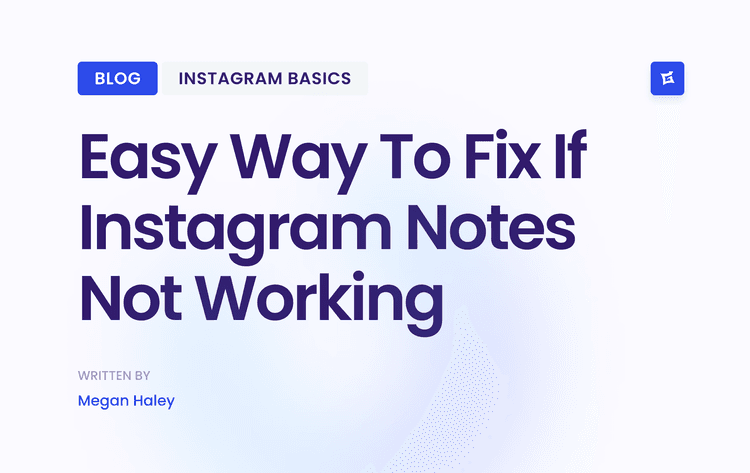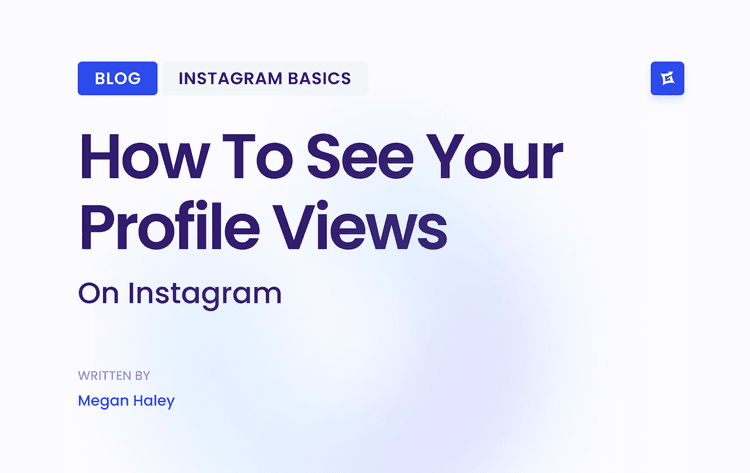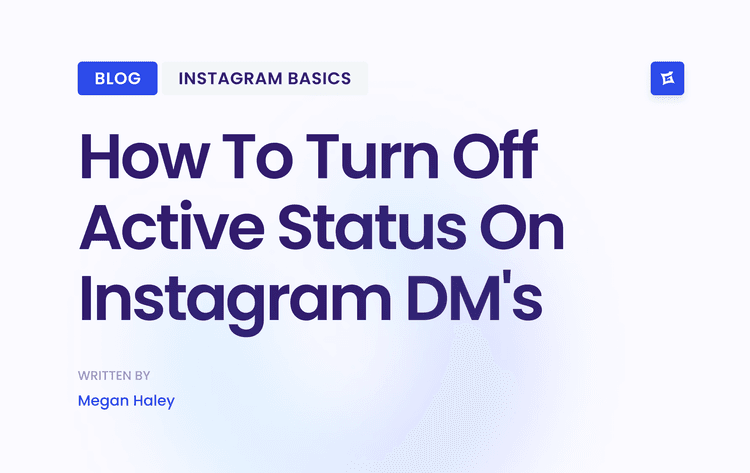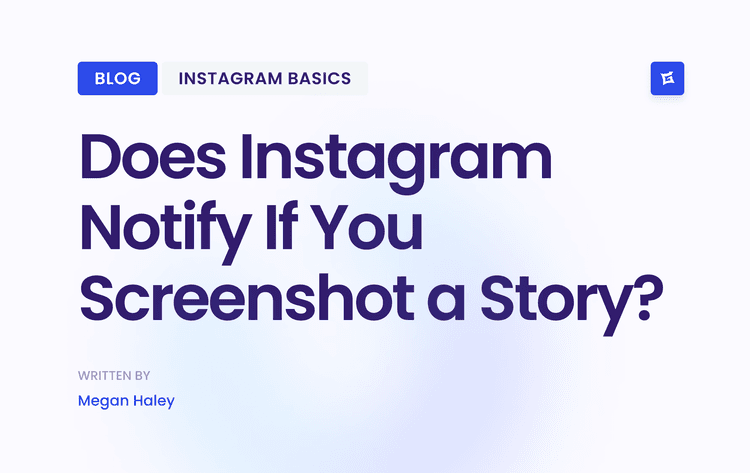Why Generic Marketing Is a Losing Strategy
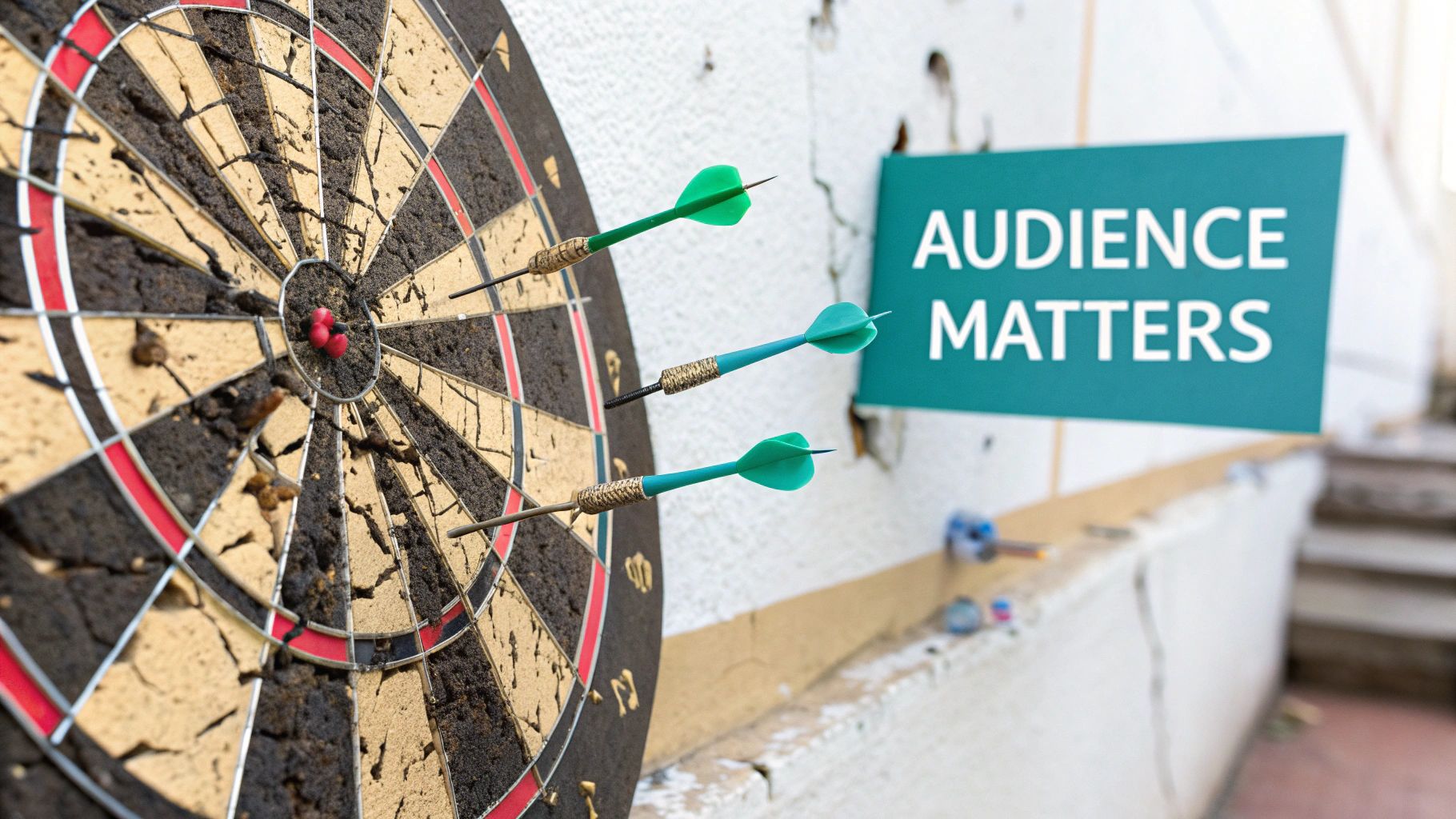
Let's be real for a second. Casting a wide net feels safe. You think you're maximizing your reach. In reality, it's one of the most inefficient things you can do. When your messaging is built to please everybody, it ends up resonating with nobody. The result? Content that gets crickets for engagement and ads that burn through your budget without ever delivering a decent ROI.
Imagine a startup selling high-end, sustainable activewear. They launch with a super broad message: "Comfortable activewear for everyone." On Instagram, they target anyone interested in "fitness" or "clothing." Three months later, their ad spend is through the roof, but sales are dead in the water.
What went wrong? They were trying to compete with fast-fashion giants and huge athletic brands without a unique angle that actually connected with a specific community.
The Power of Niche Targeting
Frustrated, the startup's founder starts digging into their few customer reviews and social media comments. A pattern emerges. Their actual buyers are mostly women aged 25-40 who follow yoga influencers and are passionate about eco-friendly products. That's it. That's their niche.
Armed with this little piece of gold, they pivot. Hard.
Their new campaigns laser-focus on users interested in "sustainable fashion," "yoga," and "ethical brands." Their content stops being generic and starts telling the story behind their eco-friendly materials and mindful production process.
The outcome was almost immediate. Ad costs plummeted because the targeting was so much sharper, and conversion rates tripled. They stopped shouting into a void and started having a real conversation with the people who were already looking for a brand just like them.
A Foundational Business Decision
Figuring out how to identify target audience segments isn't just a task for your marketing team—it's a core business strategy. With over 6.04 billion internet users across the globe, your potential customers are definitely online, but they’re scattered across countless digital communities.
Knowing exactly who you're talking to influences everything:
Product Development: You can build features that solve their actual problems.
Customer Support: Your team can anticipate their questions and frustrations before they even ask.
Content Creation: You can craft blog posts, videos, and Instagram posts that speak their language and address what they truly care about.
This focused approach is what creates a clear path to sustainable growth. You can dive much deeper into building this out by exploring a complete guide on social media targeting strategy.
Uncover Insights from Your Existing Customers
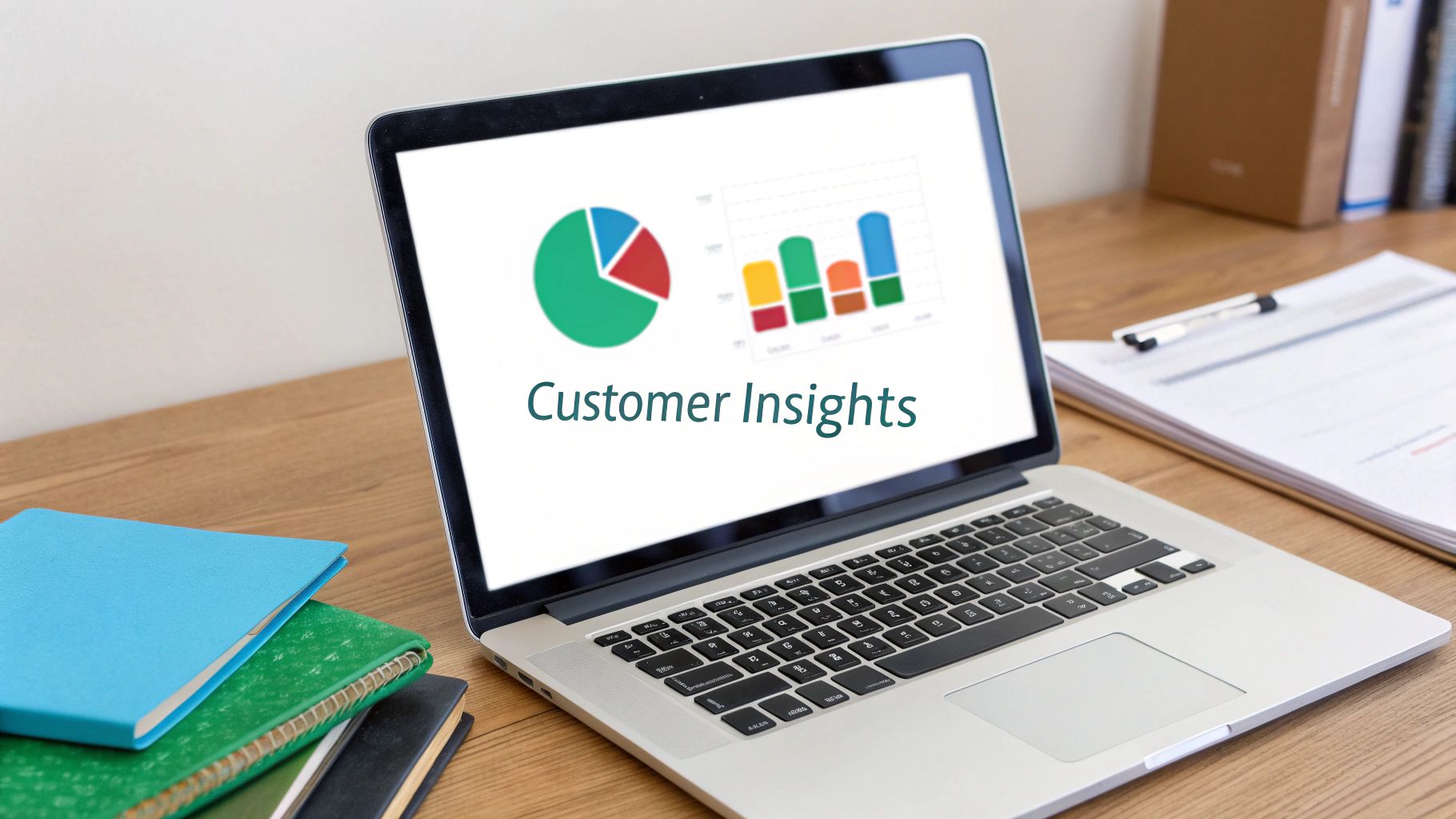
Before you spend a single dollar chasing new followers, it's time to look at the goldmine sitting right under your nose: your existing customers. These are the people who have already voted for you with their time and money. They’re your most powerful source of truth.
Figuring out who they are and why they chose you gives you a rock-solid blueprint for finding more people just like them. This isn't about guesswork; it's about digging into the real data you already own. When you learn how to identify target audience traits from this group, you anchor your entire strategy in reality, not assumptions.
Dig into Your Data Sources
Every time a customer interacts with your brand, they leave a clue. Your job is to become a detective and piece those clues together. Instead of getting bogged down by a mountain of data, let’s focus on a few key places where the best insights are hiding.
Sales Data: Go deeper than just revenue. Export your last 100 orders and start looking for patterns. Are your best customers clustered in a few specific cities? Do they buy one product first, then come back for another? This is where you uncover buying habits.
Customer Support Tickets: Your support inbox is a direct line to your audience's biggest headaches and "aha!" moments. Start tagging conversations by topic. You might find dozens of people asking for the same feature or struggling with the same problem—that’s a massive clue about what they truly value.
Social Media Analytics: Who’s actually engaging with your Instagram content? The platform gives you a clear breakdown of your followers by age, gender, and location. But don’t stop there. Notice who comments, shares, and—most importantly—saves your posts. Those are your super-fans.
By pulling insights from all these different places, you stop seeing your audience as a flat statistic and start building a rich, multi-dimensional picture of the real people who keep your business running.
Find the Patterns in Demographics
Demographics give you the foundational "who" of your audience. While basics like age, location, and gender are a good start, the real magic happens when you spot a trend that others are missing.
For example, the World Health Organization projects that by 2025, over 1.2 billion people will be aged 60 or older. This is a massive group with unique needs and serious spending power. We saw a fitness brand tap into this by shifting to online classes for seniors, which led to a 30% revenue bump. That’s the power of seeing a demographic shift and acting on it. You can explore more of these future trends over on Syspree.com.
When you truly get to know the people who already love what you do, you build a foundation that makes every single marketing decision smarter and more effective.
Analyze Your Competitors to Find Your Opening
Why start from scratch when your competitors have already spent a small fortune figuring out who buys their stuff? Digging into their strategy gives you a massive head start on understanding the market. More importantly, it helps you spot who they're overlooking. This isn't about blindly copying them; it's about smart reconnaissance to find your own unique angle.
The fastest way to get a read on the situation is to dive deep into their social media. Forget the vanity metrics like follower count for a second and focus on what really matters: engagement. Which of their Instagram posts are actually getting people to react with likes, comments, and shares? This is a direct line into what their audience—and very likely a segment of your potential audience—truly cares about.
Let's say you're in the skincare game. You notice a rival brand's posts about "vegan ingredients" get triple the engagement of their posts on "anti-aging." Boom. You've just uncovered a core value of your shared audience. They're more motivated by ethical sourcing than by traditional benefits. That's a powerful insight you can build your entire content strategy around.
Decode the Comments Section
Think of the comments section as a free, unfiltered focus group. Seriously. Go scroll through the feedback on your competitor's most popular posts, but don't forget their least popular ones, too. This is where you'll find the raw, honest opinions that reveal unmet needs and major frustrations.
Look for patterns. What questions are people asking that your competitor isn't bothering to answer? Are they begging for product improvements or complaining that certain options are missing? These gaps are pure gold. If a rival coffee brand's followers are constantly asking for a decaf version of their best-selling blend and getting radio silence, that’s a flashing neon sign for a product you could introduce.
Think of competitor analysis as drafting in a race. You let them do the hard work of breaking the wind, then you use their momentum to find your moment to pull ahead. You're not just seeing who they target, but pinpointing the audience they're failing to serve effectively.
Look Beyond Their Social Feed
Your detective work shouldn't stop at their pretty Instagram grid. You need to zoom out and see the bigger picture. Exploring online communities and forums will give you a much more complete view of the landscape.
Reddit Threads: This is where the real talk happens. Find subreddits related to your niche (like r/skincareaddiction or r/homegym) and just search for your competitors’ names. You’ll find brutally honest reviews and candid discussions about what people wish they could find on the market.
Industry Reports: A quick Google search for market research in your industry can unearth reports on emerging consumer trends. This data can tip you off to shifting priorities or new demographics, giving you a serious strategic advantage.
Specialized Tools: If you want to get serious and save time, there are platforms built for this. For a great breakdown of what's out there, check out this guide to the top social media competitive analysis tools.
Putting these pieces together gives you a crystal-clear picture of what works, what falls flat, and where the underserved customers are hiding. Armed with that knowledge, you can carve out a distinct space in the market and build a brand that makes your audience feel truly seen.
Find Your Audience on Social Media
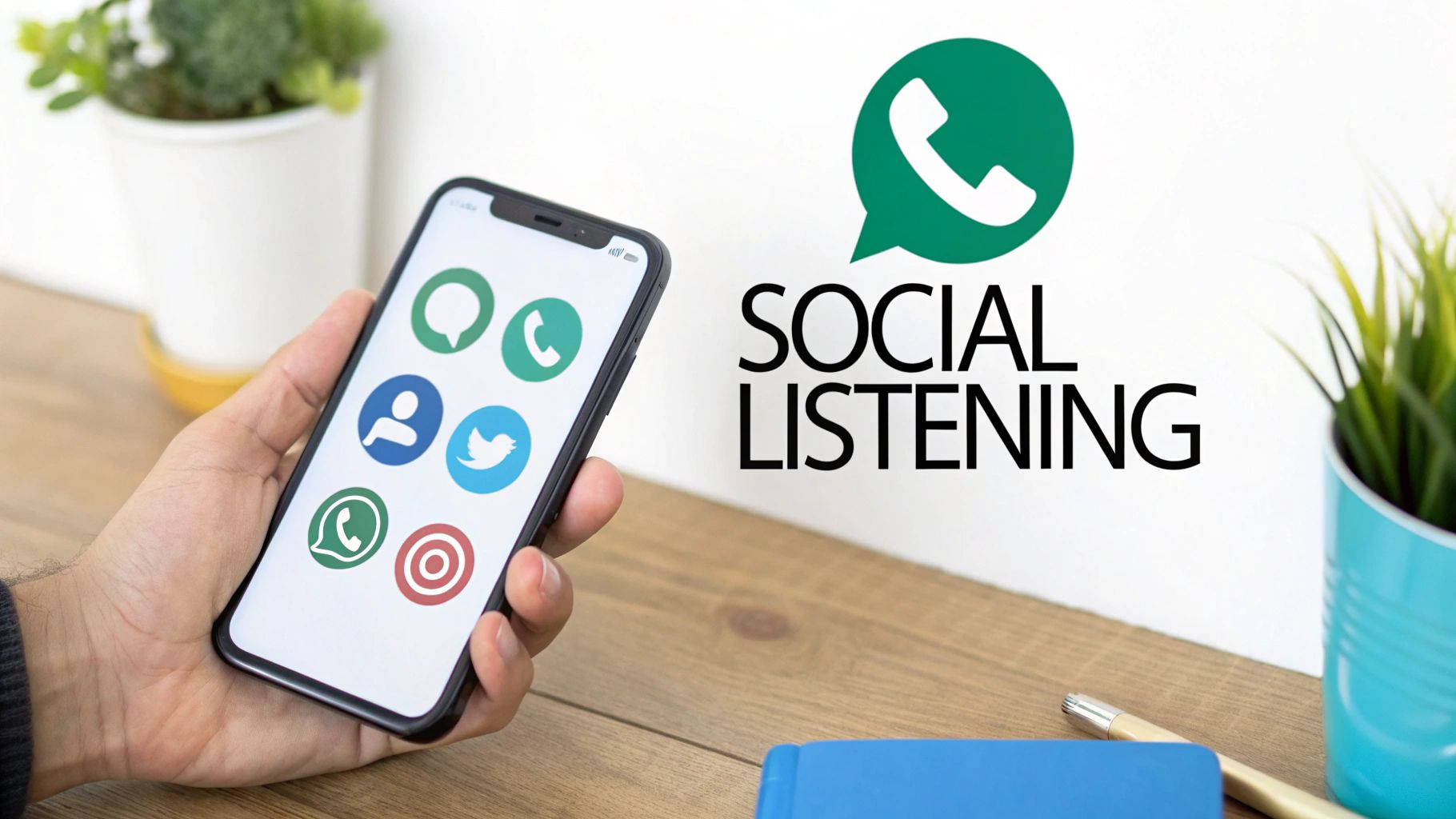
Think of your social media channels as a massive, real-time focus group. It's so much more than a place to just post content. To truly understand who you're talking to, you have to move past the surface-level numbers like follower counts.
The real gold is buried in the analytics dashboards of platforms like Instagram, Facebook, and TikTok. This is where you can see exactly what your audience's behavior is telling you, transforming your social media from a simple broadcasting tool into a powerful listening device.
Look Past the Likes and Follows
Let’s be honest, vanity metrics feel good, but they don't move the needle for your business. The data that really matters is behavioral—the shares, saves, and comments that signal genuine interest. These actions show you what your audience finds so valuable that they want to revisit it or share it with a friend.
For instance, take a look at your Instagram Reels. Which ones get the most shares? That's your clue to the content that resonates on a deeper level. A post with tons of saves probably means you’ve created educational content your audience wants to remember, giving you direct insight into their needs. You can get a much deeper dive into this by checking out the data available through your Instagram Audience Insights.
Here’s How It Works in The Real World
Imagine a local coffee shop trying to drum up more afternoon business. Their follower count is climbing steadily, but engagement feels flat, and sales aren't budging. They decide to dig into their Instagram Insights and uncover two game-changing facts:
A huge chunk of their most engaged followers is aged 18-24.
These followers are most active online between 2 PM and 5 PM on weekdays.
Suddenly, the picture becomes clear. They have a massive, untapped student audience looking for a study spot right after their classes end. This single insight led them to launch an "Exam Week Fuel Up" promo, offering a discount on coffee and pastries during those specific hours. It was a huge success, turning follower data directly into revenue.
This is the entire point. It’s about turning numbers on a screen into actionable strategies that make a real-world impact. You're connecting the dots between who follows you and how you can actually serve them.
Different Platforms, Different Data
Every social media platform offers a unique window into your audience. To define your ideal customer, you need to know where to look and what the numbers mean.
Here’s a quick breakdown of some of the most critical data points you can pull from social media and what they actually tell you about your audience.
Key Audience Data Points on Social Platforms
Age & Gender:
You can find this data in tools like Instagram Insights or Facebook Audience Insights. It reveals the basic demographic makeup of your current followers, helping you understand who your content is reaching in terms of age range and gender.Top Locations:
Platforms such as TikTok Analytics (Follower tab) or Facebook Insights provide data on where your audience is geographically concentrated, including specific cities and countries. This helps you tailor content and posting times to your key audience regions.Active Times/Days:
Within Instagram Insights (under the Total Followers section), you can view when your followers are most active online. This information helps you schedule posts for maximum visibility and engagement.Professional Data:
LinkedIn Page Analytics (Visitor Demographics section) offers insights into your audience’s professional background, including job function, seniority level, industry, and company size. These details are especially useful for B2B brands looking to refine their targeting.Engagement Type:
Post-level analytics available on most social media platforms show what types of engagement your audience prefers—whether they tend to share, save, comment, or simply “like” your content. This helps identify what drives deeper interaction.Content Format:
By comparing performance data across formats (e.g., Reels vs. Carousels) within native platform analytics, you can determine which media types—video, image, or text—resonate most with your audience. This guides content strategy and creative direction.
This data helps you build a foundational understanding, allowing you to create content that feels like it was made just for them.
Use the Right Data for Your Business
For a consumer brand, Facebook is still a giant. It has roughly 3.065 billion monthly active users, and its dominant age group is 25-34 years old. On top of that, it’s a leader in social commerce, with 39% of users reporting they’ve made a purchase directly through the platform. That's invaluable information.
But for B2B brands, the game is completely different. Your audience isn't just defined by their personal interests; their job title, industry, and professional pain points are what matter. This is where a platform like LinkedIn shines. It’s less about demographics and more about firmographics. Learning how to identify and connect with the right people requires a specific skillset, which is why a Modern Guide to Prospecting on LinkedIn can be so crucial for B2B success.
Craft Actionable Customer Personas
All that research you've just done—combing through your customer data, spying on competitors, and diving deep into social media trends—is just a pile of facts. It's interesting, sure, but it's not actionable. Not yet.
This is where customer personas come into play. They’re the bridge between raw data and real-world strategy. Think of them as semi-fictional characters, built from real data, who represent your ideal customer. They change abstract numbers into a face, a name, and a story your entire team can get behind.
Instead of a dusty document filed away somewhere, a good persona becomes a practical tool for making smarter, more empathetic decisions every single day.
From Data Points to Human Stories
The whole point is to take all those scattered data points and weave them into a snapshot of a real person. You’re not just describing a market segment; you’re building a profile of someone with goals, frustrations, and specific motivations that guide what they buy and why.
Let’s bring this to life. Imagine you run an e-commerce brand selling ethically made home goods. Your research keeps pointing to a clear pattern: a huge chunk of your audience is passionate about sustainability, discovers products on Instagram, and is happy to pay more for quality.
From that insight, "Sustainable Sarah" is born.
A great persona makes you ask, "What would Sarah think of this?" It snaps your perspective from abstract data to a customer-first mindset, ensuring your marketing, content, and products actually connect with the people you’re trying to reach.
Building Your Persona Profile
Creating a detailed profile helps everyone on your team visualize who they’re really working for. A strong persona needs to go way beyond the basics.
Here’s a simple but effective template you can use to build out a persona like Sustainable Sarah:
Background: Give them a name, age, job title, and a little backstory.
Example: Sarah is a 32-year-old project manager living in a major city. She’s environmentally conscious and goes out of her way to find brands that align with her values.
Goals: What are they trying to accomplish that relates to what you offer?
Example: Her goal is to create a beautiful, eco-friendly home without having to compromise on style or quality.
Frustrations (Pain Points): What’s standing in their way?
Example: She struggles to know which brands are genuinely ethical and feels overwhelmed by all the "greenwashing" out there.
Motivations: What are the core drivers behind their purchase decisions?
Example: Sarah is motivated by brand transparency, quality craftsmanship, and the story behind the products she brings into her home.
Preferred Channels: Where do they hang out online and discover new things?
Example: She finds most of her new products on Instagram, following influencers who focus on sustainable living and interior design.
Suddenly, "a 32-year-old urban professional" becomes "Sustainable Sarah," a character with clear needs and desires. Now, when your team brainstorms a new Instagram campaign, they aren’t just targeting a faceless demographic; they’re creating something for Sarah. That shift in focus is what separates good marketing from great marketing.
If you want to dive deeper into structuring these profiles, you can learn more about how to create buyer personas and make them truly effective.
So You’ve Found Your Audience. Now What?
Pinpointing your target audience is a huge win, but let's be real—it's only half the battle. All that fantastic research is just a pretty document until you actually use it. This is where your customer personas come to life and start shaping every move you make.
If you don't have a solid plan to put these insights into play, they'll just collect digital dust. The goal here is to turn what you've learned into concrete actions that sharpen your marketing, guide your content, and genuinely grow your business. It's time to stop just knowing your audience and start showing them you get it.
Fine-Tune Your Marketing Message
Think of your customer personas as a communication cheat sheet. You now know their biggest headaches, their ultimate goals, and what truly motivates them. This is your ticket to crafting messages that hit home because they speak directly to what your audience cares about, not just what you want to sell.
For instance, a generic ad saying, "Our coffee is the best," is forgettable. But what if you’re trying to reach your "Busy Professional Brenda" persona? A message like, "Stop wasting time in long lines. Our subscription delivers premium, ethically-sourced coffee so your mornings run smoother," is a game-changer. One is a bland statement; the other is a direct solution.
This shift from talking about features to highlighting benefits is everything. You're no longer just selling a product; you're selling a genuine solution to your audience's specific problem.
Let Your Audience Guide Your Content and Products
Your audience research should be the number one driver for both your content calendar and your product roadmap. Every frustration and desire you uncovered is a goldmine of ideas just waiting to be tapped.
Smarter Content Creation: If your research reveals that your audience struggles with "finding sustainable fashion on a budget," you've just unlocked a whole series of potential blog posts, Instagram Reels, and guides. You’re not just filling a content schedule; you're providing real value that builds incredible trust.
Data-Driven Product Development: Did you notice in your support tickets that customers keep asking for a travel-sized version of your best-selling face cream? That’s not a complaint—it’s a direct request from the market. This is the kind of insight your product team dreams of.
Show Up Where They Already Are
Finally, your personas literally tell you where to find your audience. Stop throwing your marketing budget at platforms where your ideal customers just aren't hanging out.
If your "Sustainable Sarah" persona discovers new brands through eco-conscious Instagram influencers, then you know that influencer collaborations and targeted Instagram ads should be your top priorities. On the flip side, if your audience is full of B2B professionals, your time and energy are much better spent creating valuable content on LinkedIn than trying to go viral with a TikTok dance.
This focused approach makes sure your message not only resonates but actually reaches the right people, in the right place, at the right time. When you align every action with your audience data, you build a smarter, more effective business from the ground up.
Answering Your Top Questions
Even with a great strategy in hand, you’re bound to hit a few questions along the way. That’s perfectly normal. Let's tackle some of the most common ones that come up when you're digging into audience research.
Getting these things straight will help you move past any roadblocks and feel much more confident in the direction you’re headed. The whole process is a cycle—you refine your message, tweak your tactics, and find the right places to connect with people.
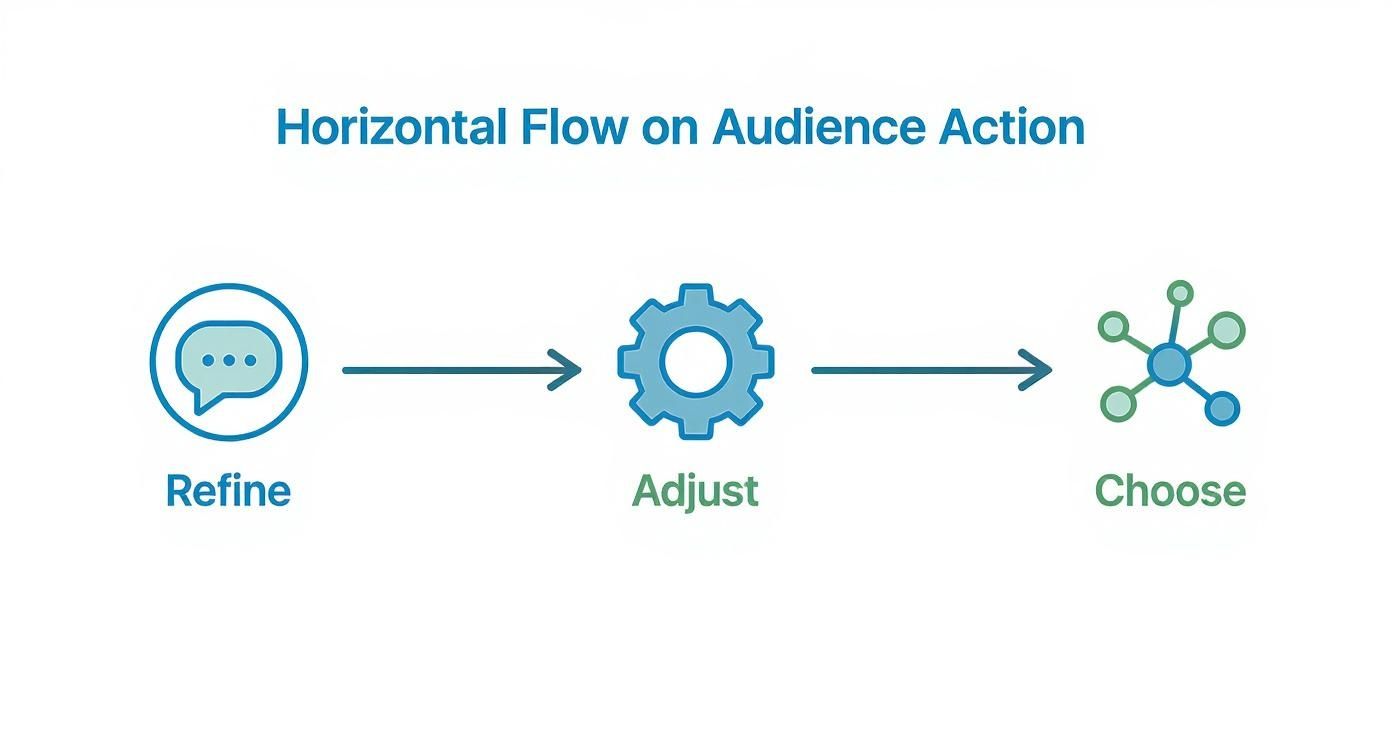
Think of this as a continuous loop of learning and adjusting, not a one-and-done task.
What if I Have Multiple Target Audiences?
This is a great question, and the short answer is: that's totally fine. In fact, most businesses serve a few different types of customers. A local gym, for example, probably has serious powerlifters working out alongside beginners who are just trying to get comfortable.
The trick is to avoid lumping them all together. You need to create separate, detailed personas for each distinct group. This is the only way you can craft messages and content that genuinely speak to their different goals and pain points. If you try to create one generic message for everyone, you'll end up connecting with no one.
Treat each audience segment as its own little world. "Powerlifter Paul" is driven by performance goals and a competitive community, while "Newcomer Natalie" is looking for a supportive, judgment-free space. They need completely different content and a different tone to feel like you "get" them.
By splitting them up, your marketing becomes so much more effective. You could run an Instagram ad for Paul showcasing the new squat racks, while Natalie sees a Facebook post about a beginner-friendly yoga workshop. That kind of specific targeting is what makes people feel seen.
How Often Should I Update My Customer Personas?
Your personas aren't something you carve in stone. Markets change, new trends pop up, and the people you serve will evolve. So, you can't just create them once and file them away.
As a general rule, it's a good idea to revisit and refresh your personas at least once a year.
But sometimes, you need to do it sooner. Certain events should be an immediate trigger for a persona check-up:
You launch a major new product: A new offering could easily attract a brand-new type of customer you hadn't considered.
The market shifts: Just think about how the explosion of short-form video changed what audiences expect on Instagram.
Engagement or sales take a nosedive: If your numbers are slipping, it’s a big red flag that your messaging isn't hitting the mark anymore.
You expand into a new market: Moving into a new city or country means you’ve got to understand the local culture and what makes people tick there.
Regularly checking in on your personas keeps your entire strategy sharp and relevant. Consider it a health check for your marketing. The whole point of learning how to identify target audience segments is to stay connected to who your customers are today, not who they were six months ago.
Ready to stop guessing and start growing? Gainsty uses advanced AI and real Instagram experts to connect you with an engaged audience that wants what you offer. Get authentic, organic followers and watch your influence soar.
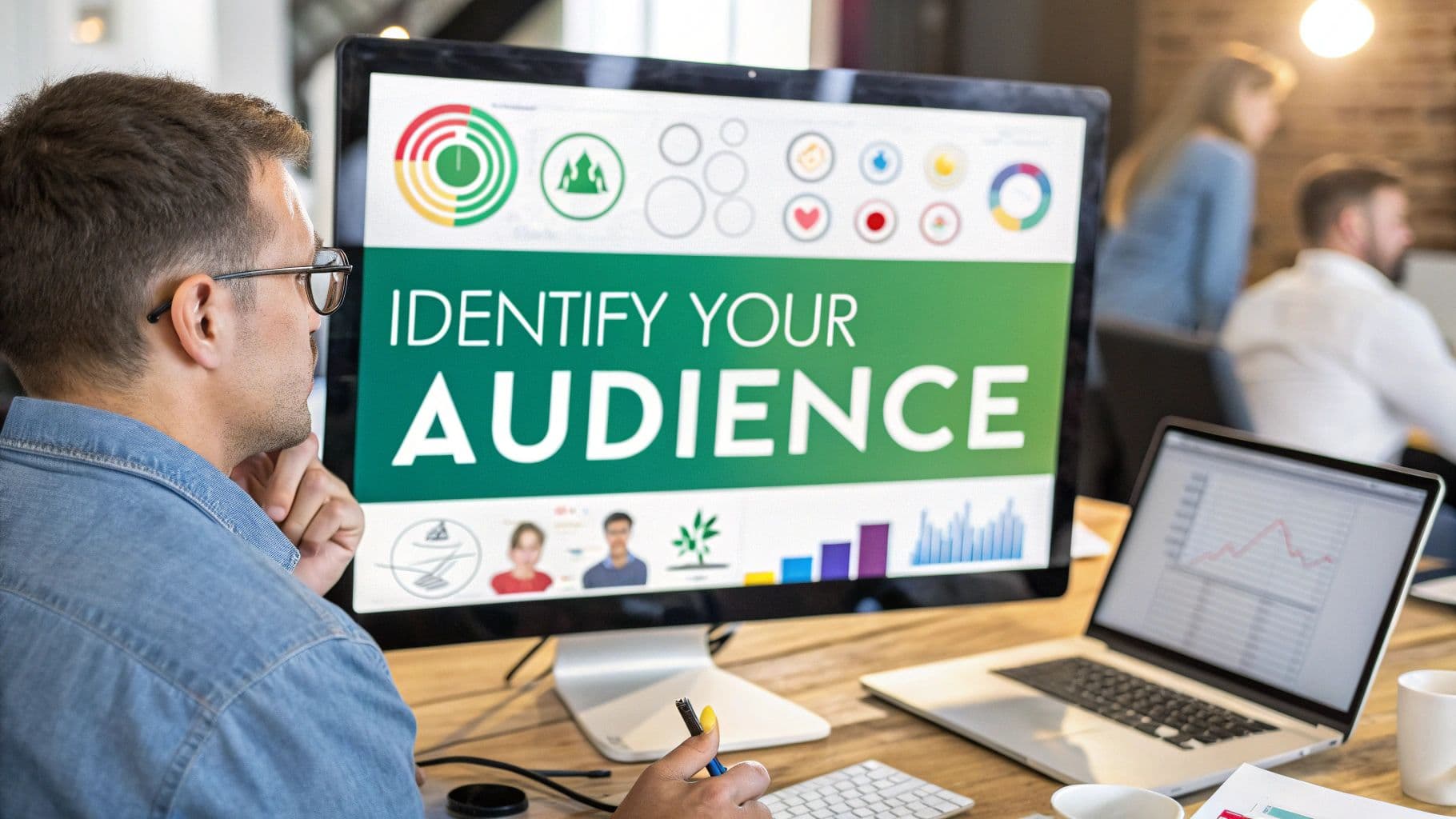
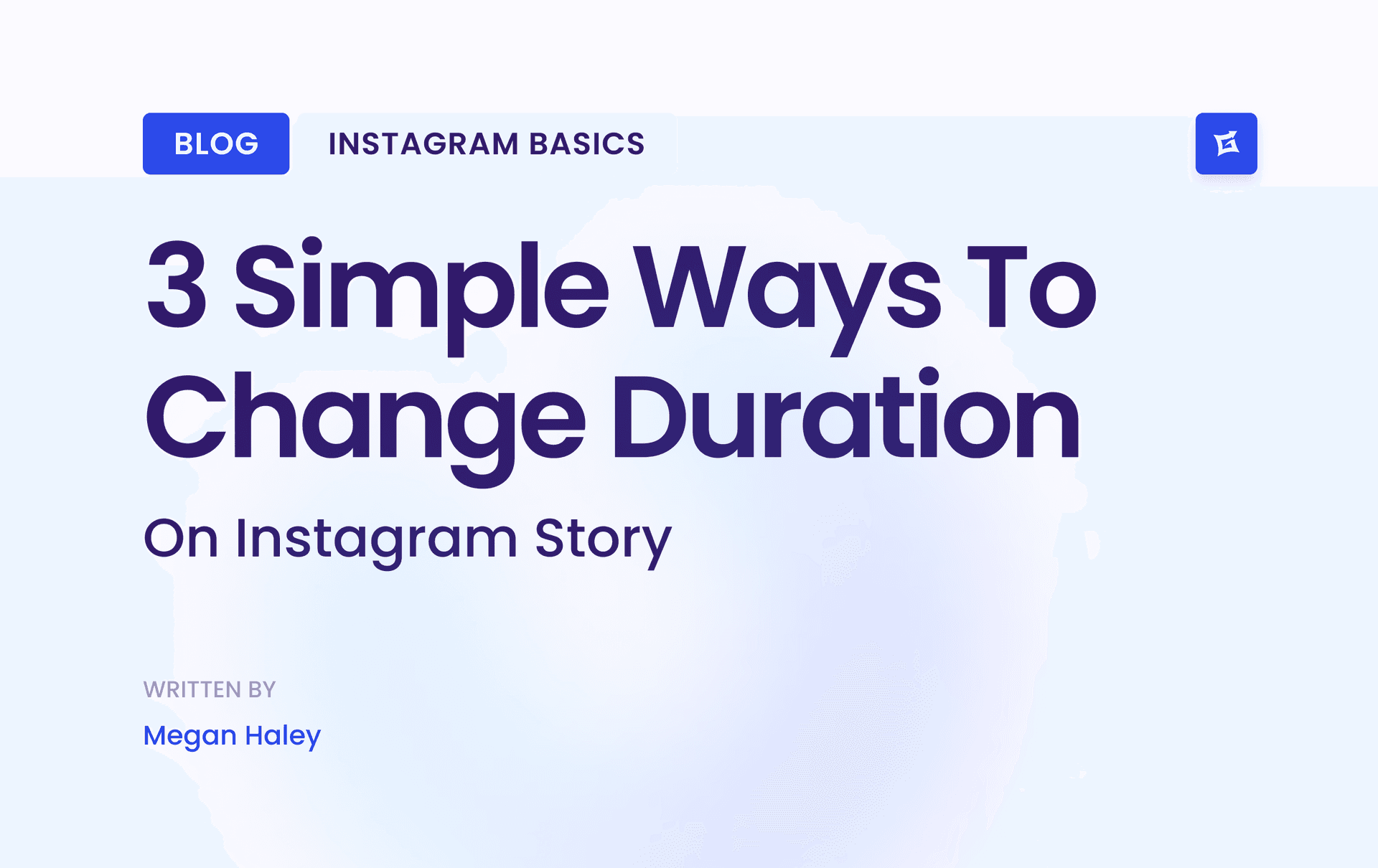
.png&w=1920&q=75&dpl=dpl_9XSWKBjhcBN6v6b1SN7m3p1WWjfr)
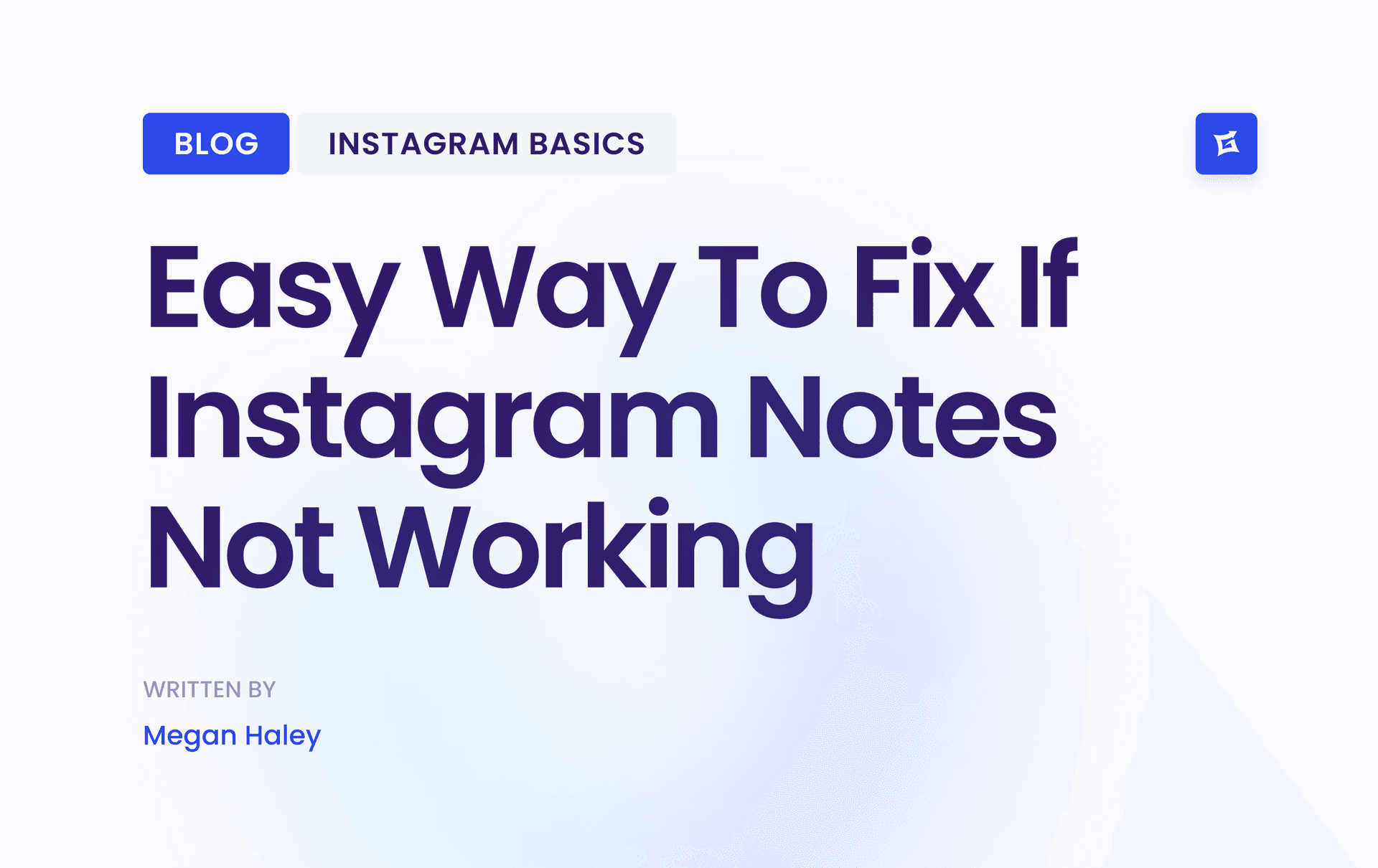
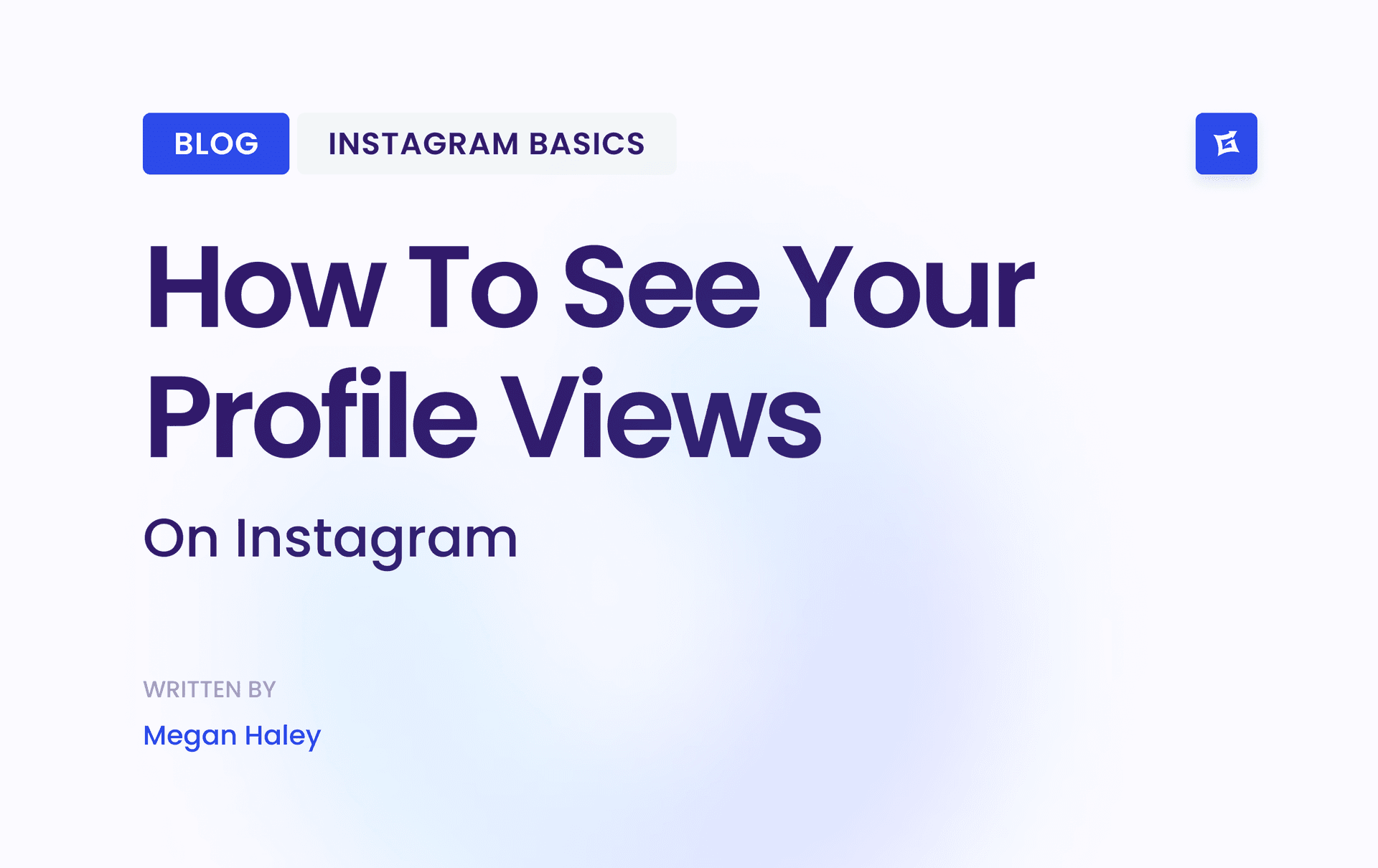
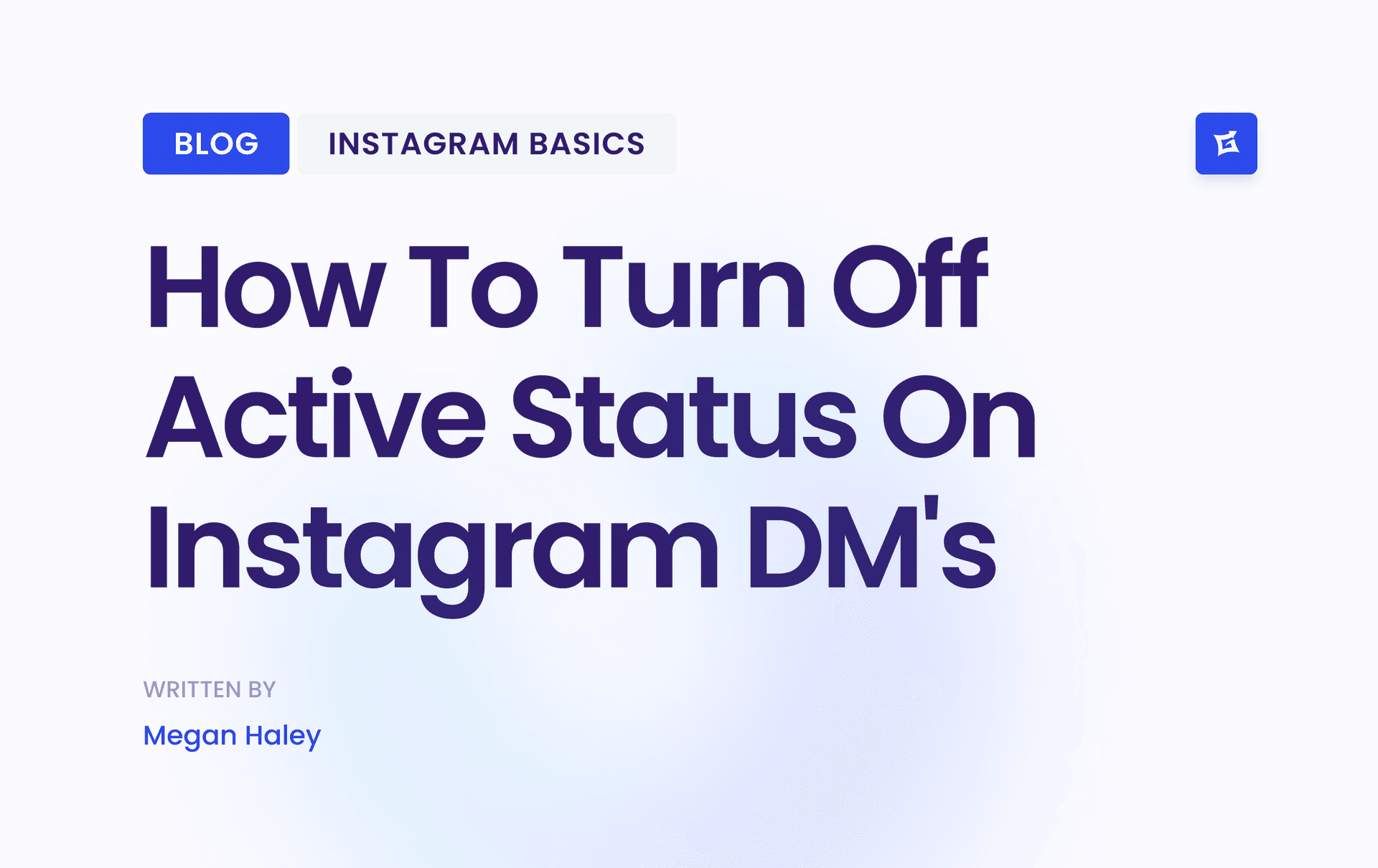
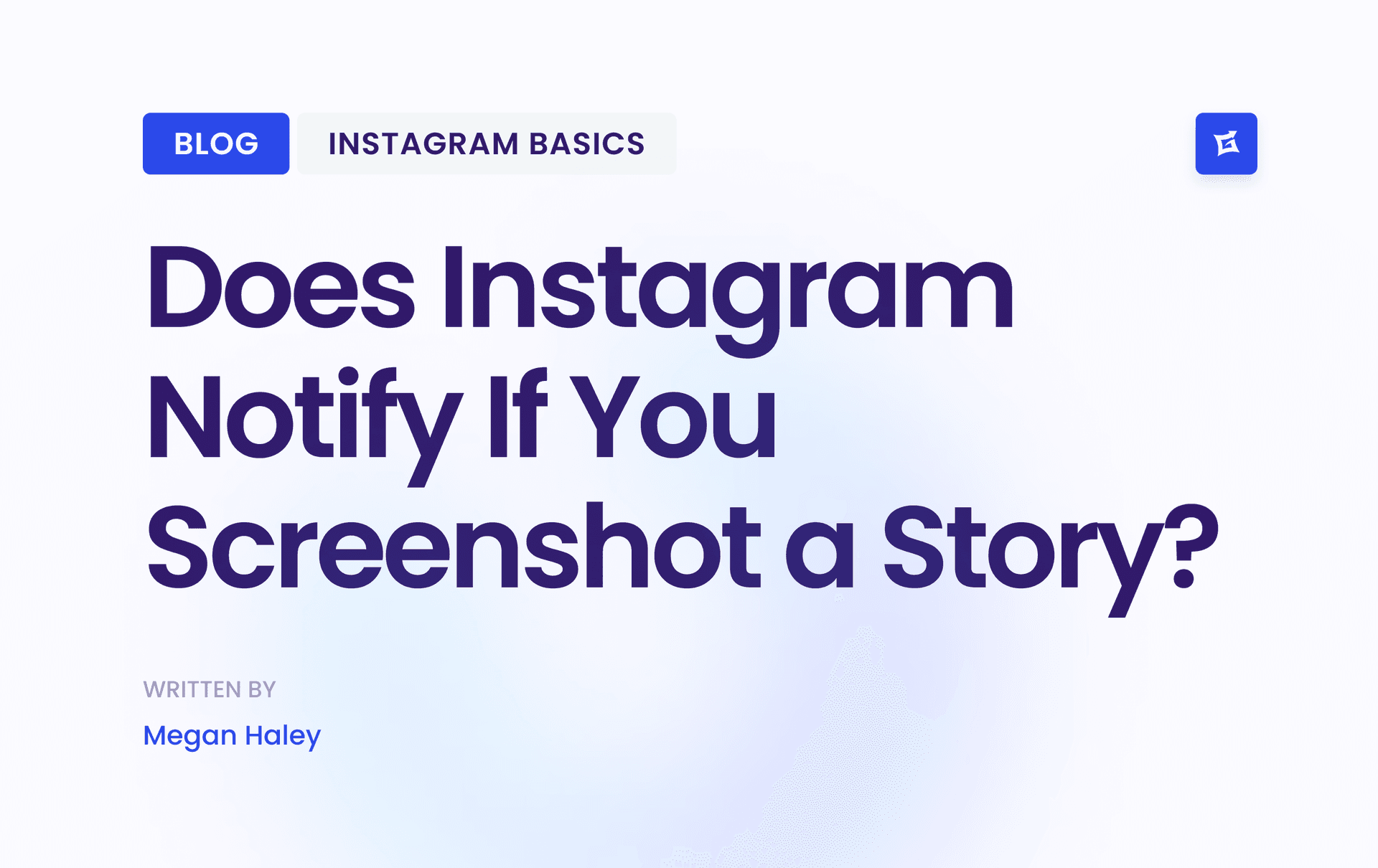



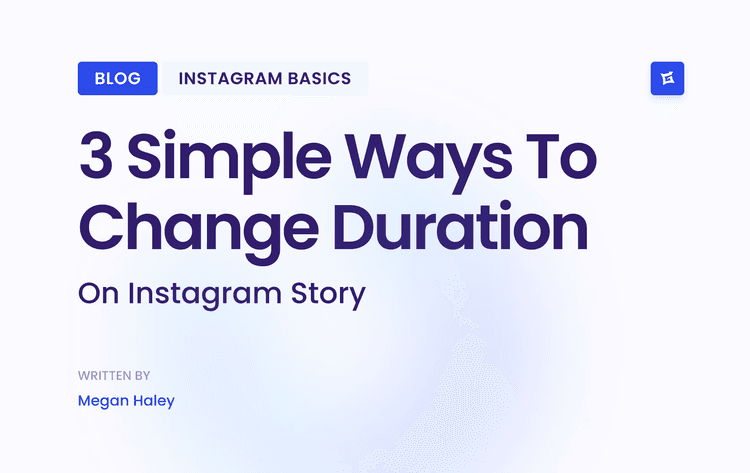
.png&w=750&q=75&dpl=dpl_9XSWKBjhcBN6v6b1SN7m3p1WWjfr)
